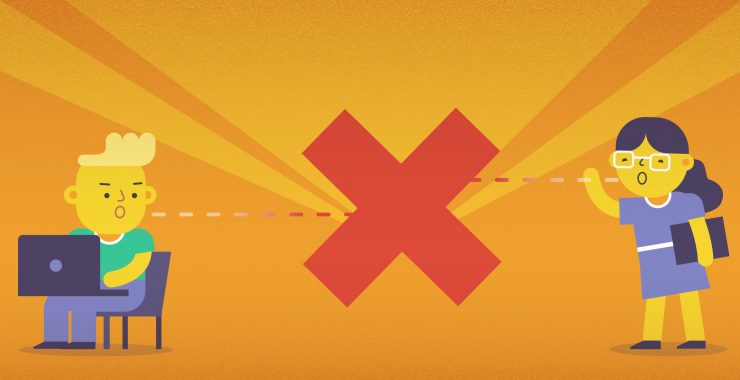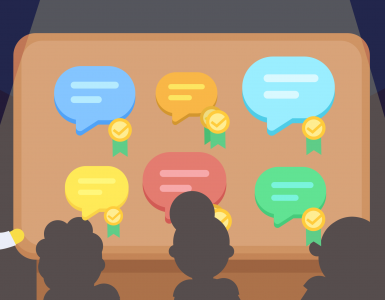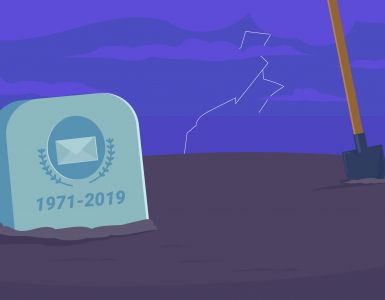Do you remember when we were at school and had group projects? The idea was to work as a team and share ideas.
This one itsy-bitsy thing was that not everyone was heard or considered. It was tough to communicate your opinion unless you were the loud one on the team.
Fun, huh? 😀
The same applies today when we are adults working on more serious projects. Effective communication can go a long way when working in a company.
Many would say that one of the most significant factors in business failure is poor decision-making. While that can cost a company millions of dollars, communication breakdown is a significant threat.
This is even more true today with the pandemic happening around the world. Most businesses started doing remote work, which meant we had to learn new ways to communicate. In summary, saying workplace communication is essential would be a colossal understatement.
The phrase “It goes without saying” should be removed from business because if something is essential, it goes WITH saying. In this fast-paced digital world, clearly understanding your goals and tasks can make or break a business.
What is communication breakdown?
Communication breakdown is a lack of communication, a failure to exchange information between two or more people.
Good communication reflects improved business performance, better productivity, and higher staff retention. Communication must be a priority for an organization. If there are issues, everyone should get involved and try to overcome them.
Communication breakdown examples
Let’s have a look at the following basic scenario:
Jackie and Clare are working on a project together. They must complete a task to finish the job, but both think the other will handle it. The whole thing leads to a missed deadline and finger-pointing between them over who did what.
This could’ve been prevented if they talked about it more openly. The issue wasn’t the lack of resources but the breakdown of communication. This is only one example of communication gone completely haywire.
Other possible causes of communication breakdown with examples:
- Relying on assumptions – as I mentioned in the example above, misunderstanding who will do what might confuse them. Once the employees start making assumptions, this indicates poor management communication from the top down.
- Misinterpretation—It’s easier to get clarity when we hold face-to-face meetings. You can always ask follow-up questions. However, that opportunity is lost with the written communication we are mostly using right now.
- Assuming everyone understands the company’s jargon – this is especially common when new people join a team. The employees continue to use their corporate language, and the new ones don’t feel comfortable asking what it all means. When this happens, they lack understanding and usually stop listening.
- One-way communication—Of course, some level of authority is necessary, but managers and employees still need to collaborate. If the relationship starts to look like a dictator versus a servant, then it’s time to reevaluate.
- Constant negative feedback—It’s alright to get negative feedback from time to time; it’s even healthy. It helps us do better next time. The problem is if we constantly get criticized and not praised when we are doing something good. Focusing on the negative makes people feel unvalued by the company. Soon, there will be another company that will encourage them and make them feel seen.
- Cultural differences—If we work with international clients or employees from abroad, we are faced with cultural diversity. It is important to try and mix people from different backgrounds. However, managers tend to be persuaded by people from a similar or same culture, which leaves everyone to face challenges when communicating.
There are many more causes of communication breakdowns, but they are all easy to solve once we decide it’s time to address them. To solve communication problems, we need to communicate. This is crucial in finding the solution within an organization. So what to do next?
6 Strategies to avoid communication breakdown
Now that we’ve diagnosed the roots of the problems, it’s time to dig into some solutions.
- Create a safe space for sharing ideas. We are uncomfortable sharing ideas or voicing concerns in front of others. When I speak publicly, I feel like I’m put on the stand. I’d suggest that everyone be able to provide anonymous feedback or emphasize that there is no fallout when sharing ideas.
- Have an open-door policy—as I said earlier, not all of us want to speak publicly, so just keep your door open, or in today’s world, your chat. But be careful. This can lead to multiple interruptions throughout the day. Many will also become dependent on you to answer their questions at any time. I’d suggest determining certain hours when people are welcome to ask questions so that you can focus on your work the rest of the time.
- Speaking of an open-door policy, listen – not just open doors, but ears too, cause communication to go both ways. Additionally, we should practice empathy when communicating, put ourselves in others’ shoes instead of becoming Judgy McJudgerson, and encourage others to speak up. When we praise and encourage people, they start to feel welcomed and valued and will probably put more effort into their work. Daily stand-ups or one-on-ones should be our general practice where everyone gets to have their voice.
- Invest in the right software tools – the right tools can empower communication. The physical distance can exacerbate all the communication issues we are facing now. Relying on our written communication has been no picnic. It’s straightforward to misinterpret someone without facial expressions and body language. So throw an emoji here and there, and the next best thing is to turn on your camera occasionally. Naturally, to achieve this, you need the right software. On this note, Chanty would be a great asset. It can also be a knowledge-sharing platform and a central place for all necessary information. Search for tasks, review goals, and talk to your teammates across the company.
- Define the chain of command – everyone should clearly know who to talk to and whom they need to report to. Assign one lead for a task who will be in charge of the entire progress and flow of information. And naturally, tell everyone.
- Use team-building. When people get to know each other on a personal level, the professional one becomes a bit easier. Team-building is a great ice-breaker for getting to know each other. And it doesn’t have to be a weekend getaway. Team-building can be a fun game during or after working hours (following all the safety measures, of course). Even a simple call over drinks on a Friday can do the trick.
Why does a breakdown of communication occur?
I’m afraid communication breakdown is something we’ll all have to face at one point or another in our careers. Rather than focusing on the negative, we should all strive to do our best and foster better relationships with the people around us.
Creating strong relationships takes time and effort, but it’s worth it. Open group communication with your teammates helps everyone feel satisfied and comfortable in their work. Hopefully, these insights can help us find a path to making relationships healthier and more productive.
If we implement best practice techniques to improve internal communication, we can all excel in our work and careers. So feel free to drop me a line and tell me how it goes. Have you ever experienced communication or mental breakdowns, and how did you overcome them?











If left unaddressed, the communication breakdowns can take a toll on your organization—increased stress, decreased productivity, low morale. Communication breakdown can happen in a variety of ways, from avoiding a difficult conversation with a manager or coworker.